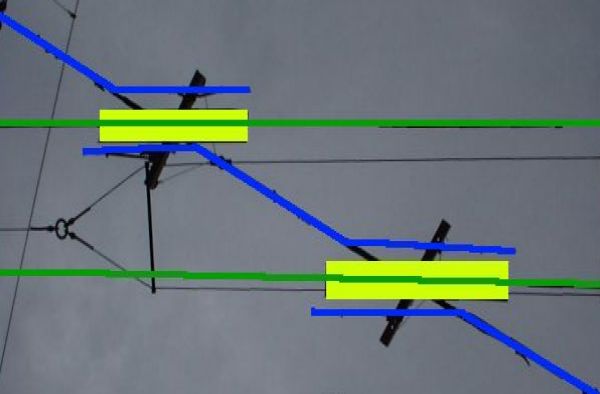|
This page was moved to Wikipedia:
It lasted nearly 48 hours and received a useful addition about Australia. Then it was stripped down to: Given this merciless editing, a copy of the original page is preserved here. Back to:
|
||
| |
||
Trams draw their power from a single overhead wire at 500-ish volts above earth. Trolley busses draw their power from two overhead wires with 500-ish volts between them. So ... How can a tram route cross a trolley bus route without short circuits? This example was photographed in Innsbruck, Österreich in 1997 September. A trolley bus is just passing through the crossing. (Medium size pic) Now with the important bits coloured (see key below):
The view looking directly upward:
And this one with the important bits coloured (see key below):
The first requirement is that the trams must have pantograph-type power collection - roller-type pick ups would not work! The trolley bus wires run continuously through the crossing - they need to anyway because of the pickup structure. The tram conductors are slung a few centimetres lower than the trolley bus wires. Close to the junction the wire merges into a solid bar which is angled to run parallel to the trolley bus wires for about half a metre. Another bar similarly angled at its ends is hung between the trolley bus wires. This is electrically connected above to the tram wire's catenary cable. The tram's pantograph will easily bridge over between these different conductor sections providing it with a continuous pickup. Where the tram wire crosses, the trolley bus wires are protected by an inverted trough of insulating material extending 2 or 3 cm below the level of the trolley bus wires. The tram pantograph raises the conductor wire a little as it passes under. These troughs are presumably to limit how far it can do that and to provide a backstop to prevent the tram pantograph ever touching the trolley bus wires. 2003 June |
||
|
|




